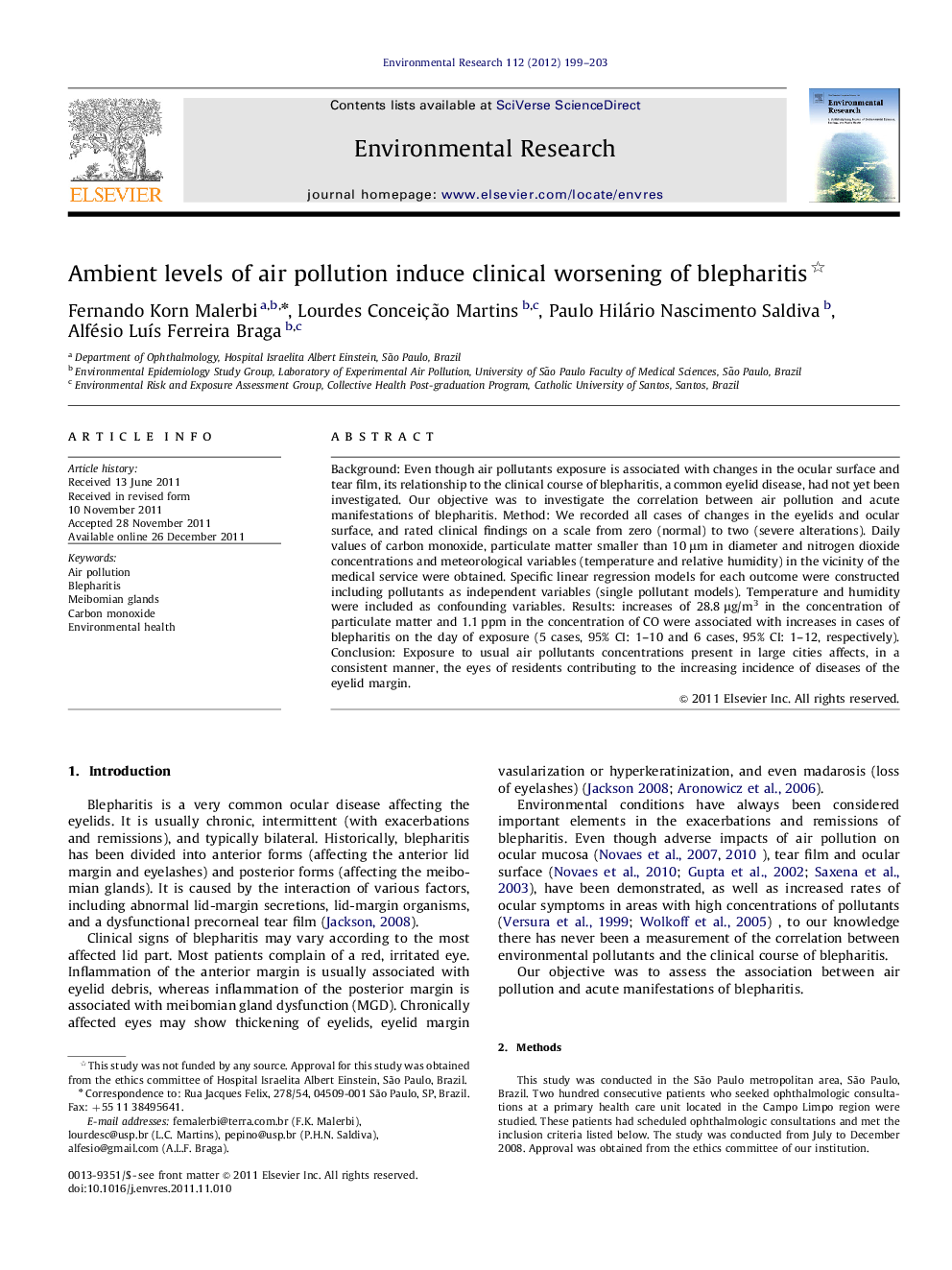| Article ID | Journal | Published Year | Pages | File Type |
|---|---|---|---|---|
| 4470164 | Environmental Research | 2012 | 5 Pages |
Background: Even though air pollutants exposure is associated with changes in the ocular surface and tear film, its relationship to the clinical course of blepharitis, a common eyelid disease, had not yet been investigated. Our objective was to investigate the correlation between air pollution and acute manifestations of blepharitis. Method: We recorded all cases of changes in the eyelids and ocular surface, and rated clinical findings on a scale from zero (normal) to two (severe alterations). Daily values of carbon monoxide, particulate matter smaller than 10 μm in diameter and nitrogen dioxide concentrations and meteorological variables (temperature and relative humidity) in the vicinity of the medical service were obtained. Specific linear regression models for each outcome were constructed including pollutants as independent variables (single pollutant models). Temperature and humidity were included as confounding variables. Results: increases of 28.8 μg/m3 in the concentration of particulate matter and 1.1 ppm in the concentration of CO were associated with increases in cases of blepharitis on the day of exposure (5 cases, 95% CI: 1–10 and 6 cases, 95% CI: 1–12, respectively). Conclusion: Exposure to usual air pollutants concentrations present in large cities affects, in a consistent manner, the eyes of residents contributing to the increasing incidence of diseases of the eyelid margin.
► Patients with eyelid disease were examined and the findings were ranked. ► Data from a pollution monitoring station next of the clinic were collected. ► All pollutants correlated positively with clinical findings. ► Exposure to air pollutants affects the eyelid margin.
